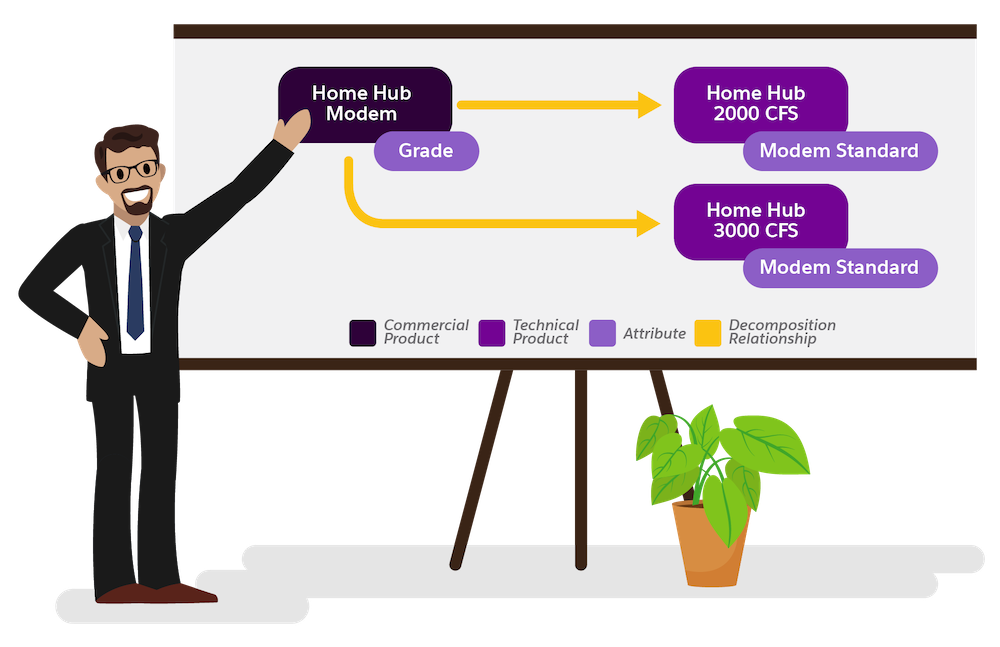Explore Decomposition Relationships
Learning Objectives
After completing this unit, you’ll be able to:
- Identify the basic types of decomposition relationships.
- Explain one-to-one, one-to-many, and many-to-one decomposition relationships.
Basic Decomposition Relationships
Several common patterns emerge when you diagram commercial products and technical products, and the decomposition relationships that map data between them. These patterns are sometimes referred to as decomposition models, and they are synonymous in the communications industry.
Decomposition Relationship Types
One-to-One
From a modeling perspective, one-to-one relationships are the simplest type of decomposition relationship. At Infiwave, the Home Hub Modem, a commercial product, decomposes to the Home Hub Modem CFS, a technical product.

In this case, there’s only one commercial product attribute, Grade, that is mapped to a technical product attribute, Modem Standard. More complex decomposition relationships usually include additional attributes. In fact, Industries Order Management (OM) doesn’t limit the number of relationships or the amount of data mapped in them.
Industries OM can handle more complex use cases, but best practice tells us that simpler is better. Keep the amount of data mappings to a minimal to avoid impact on performance. For more information, see Application Constraints.
One-to-Many
In a one-to-many decomposition relationship, a single commercial product decomposes to one of several different technical products. So, one source product has multiple decomposition relationships associated with it. For the Home Hub Modem product, based on whether the Grade attribute is set to Good or Best, the order is fulfilled with either the Home Hub Model 2000 CFS or the Model 3000. This is referred to as a condition. Based on the download speed, the customer either needs a Model 2000 or Model 3000.

Greg notices that transitioning from a one-to-one model to a one-to-many model really helps with new product introduction. Initially rolling out the Home Hub 2000 modem, then adding the newer and faster Home Hub 3000 modem next year, is totally doable, and manageable.
Many-to-One

Many-to-one relationships use multiple decomposition relationships in combination with the scope function, so that multiple commercial products on an order are fulfilled by a single technical product. Scope impacts the number of instances of a technical product after decomposition. In many-to-one relationships, decomposed fulfillment requests can be consolidated, which is more efficient when communicating with downstream fulfillment systems. By setting the correct scope, you can either have separate instances or consolidate instances per order item, or even per account.
Summary
In this module, you got a fair idea about how decomposition works in Industries OM and the significance of decomposition relationships. Because the output of decomposition is used as input to orchestration, it seems like a good time to learn more about the orchestration process. Check out Industries Order Management Orchestration Foundations module next.
